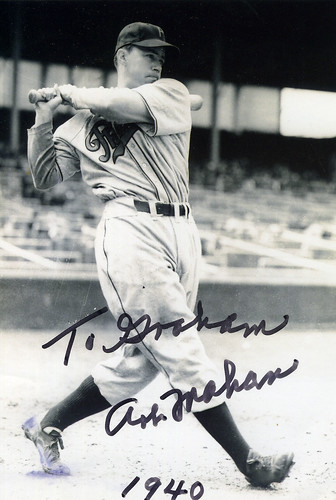What he did: Feller, who died Wednesday at 92, won 266 games in a Hall of Fame career that spanned 18 seasons. I count him, along with Lefty Grove and Carl Hubbell, as one of the few great pitchers from the 1930s. More impressive, Feller missed nearly four full seasons in the middle of his career serving in World War II (and unlike many ballplayers who rode out the war playing on USO-organized teams, Feller saw combat.) After the war ended, he returned in peak form, winning 20 games his first two full seasons back in the majors. Impressive as all this was, in a different era, I think Feller may have won 300 games.
Era he might have thrived in: I’ve heard Feller might have benefited from the extended hiatus mid-career, that as a young flame thrower who won 107 games by age 23, he could have burnt out early had he played through the war. Therefore, I’m declining to place Feller in the Pitcher’s Golden Age of the 1960s, since Sandy Koufax flamed out throwing the 300-plus innings a year required then. Instead, as I wrote for Koufax, I’m putting Feller in a supportive atmosphere where he might be nurtured as a young hurler. He’s joining Greg Maddux, Tom Glavine, and John Smoltz on the Atlanta Braves of the early ’90s. This way, Feller gets his 300.
Why: There are two major reasons Feller would thrive, namely that he’d get his four seasons lost to World War II back, and he’d probably play at least a few more seasons at the end of his career. Maddux, Glavine, and Smoltz all played into their 40s after spending their prime years with the Braves. I’m guessing Feller would follow suit, or at least last somewhere beyond age 37 as he did in real life. In fact, Feller was effectively done at 35, winning just four games his final two seasons. I don’t see that happening here. Getting to play a 162-game schedule instead of the 154 games he played during his career wouldn’t hurt his numbers either.
There’s no telling what World War II took away from Feller’s numbers, though considering that he won 20 games the three seasons before and 20 his first two full years after (with five wins tacked on at the end of 1945) he may have missed out on 80-100 wins easily. Sure, he may have blown out his arm sooner with no break, but if he didn’t, he might have had 350 wins. And Feller played his first six seasons before this in an era that strongly favored hitters. Just imagine what he’d do in a league and time where pitchers had the advantage.
Of course, in a more recent era, there’s no way Feller would have started in the majors at 17, as he did in 1936. Nobody wants the next David Clyde. My idea is that Feller signs out of high school, spends a few years in the minors (get this: in real life, he never played a day there) and then breaks in at 22, playing 20 or so years. Barring injury, I don’t see any way he falls short of 300 wins or 3,000 strikeouts.
Any player/Any era is a Thursday feature here that looks at how a player might have done in an era besides his own.
Others in this series: Albert Pujols, Bad News Rockies, Barry Bonds, Bob Caruthers, Dom DiMaggio, Frank Howard, Fritz Maisel, George Case, Harmon Killebrew, Home Run Baker, Jack Clark, Jackie Robinson, Jimmy Wynn, Joe DiMaggio, Johnny Frederick, Josh Hamilton, Ken Griffey Jr., Nate Colbert, Pete Rose, Rickey Henderson, Roberto Clemente, Sam Thompson, Sandy Koufax, Shoeless Joe Jackson, Stan Musial, The Meusel Brothers, Ty Cobb, Willie Mays
